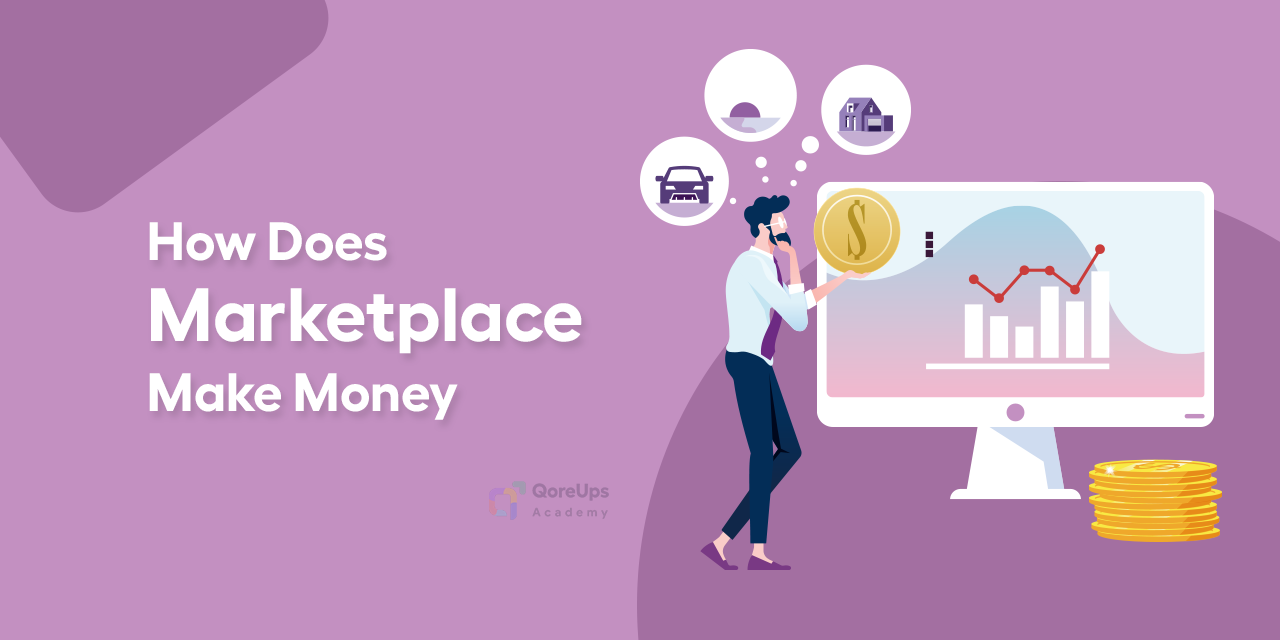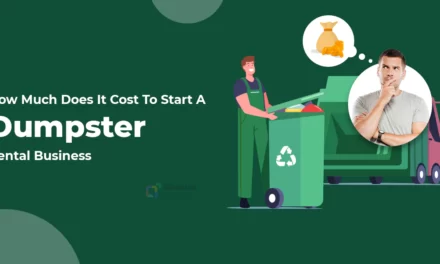Ever wondered how your favorite online marketplace, be it Amazon, eBay, or Etsy, manages to rake in profits while offering a vast array of products and services?
Dive into the intricacies of the marketplace business model with us as we uncover the fascinating ways these digital hubs generate revenue and sustain their colossal operations.
From transaction fees to advertising strategies, let’s unravel the mystery behind how does marketplace make money.
Types Of Marketplaces
There are many types of marketplace available. Some are categorized based on the customer type, core focus, industry, and other criteria.
Before entering the online business, you need to understand the diverse revenue models.
Also, note the challenges associated with different types of online marketplaces.
You can divide the online marketplaces into three main categories considering the target audience.
- Business-to-Business (B2B) Marketplaces
- Business-to-Customer (B2C) Marketplaces
- Peer-to-Peer (P2P) Marketplaces
Let’s delve into how online marketplace models operate and make money.
Now let’s see how these marketplace make money online.
Business-to-Business (B2B) Marketplaces
Business-to-business marketplaces allow transactions between businesses on their platform.
In a B2B marketplace platform, businesses can exchange goods and services with each other.
B2B marketplace businesses connect suppliers, manufacturers, wholesalers, and distributors.
It gives businesses a centralized and efficient way to trade.
How Does B2B Marketplace Make Money
- Commission-based revenue model
- Subscription revenue model
- Listing fee revenue model
Challenges of Building a B2B Marketplace Platform
- Building trust and credibility among businesses.
- Creating effective strategies to manage large-scale transactions efficiently.
- Implementing stringent security protocols to safeguard critical business data.
Business-to-Customer (B2C) Marketplaces
B2C marketplaces involve the direct sale of products or services from businesses to individual consumers.
In a B2C marketplace, businesses offer their goods or services to end-users, who are the customers.
How Does B2C Marketplace Make Money
- Subscription revenue model
- Commission-based revenue model
- Listing fee revenue model
Challenges of Building a B2C Marketplace
- Solving Chicken or egg problem that is balancing the needs of both buyers and sellers.
- Designing an intuitive interface to cater to a wide range of users.
- Securing consumer data and financial transactions with utmost diligence.
Peer-to-Peer (P2P) Marketplaces
A Peer-to-Peer (P2P) marketplace is an online platform that allows direct transactions between individuals or peers.
It enables them to buy and sell products or services directly from one another. In a P2P marketplace platform, there is no central authority or intermediary.
How Does P2P Marketplace Make Money
- Paid promotions
- Advertisements
Challenges of Building a P2P Marketplace
- Establishing and nurturing a vibrant user community.
- Addressing trust concerns among individual users proactively.
- Creating efficient processes for resolving disputes and conflicts.
| Main Metrics | B2B Marketplace | B2C Marketplace | P2P Marketplace |
|---|---|---|---|
| How Does Marketplace Make Money | Collecting Fees to List, Subscribe, and Commission | Collecting Fees to List, Subscribe, and Commission | Fee for Promotions & Advertisements |
| Targeting People | Businesses | Individuals | Individuals |
| High-Volume | Huge Transactions | Moderate Transactions | Small Transactions |
| Trust/Credibility | Trust Establishment | Balancing Trust Level | Individual Trust Level |
| Technical Issues | Bulk transactions, data security | User-friendly interfaces, security | Manage the User Community |
5 Ways Online Marketplace Make Money
In today’s digital economy, businesses are continually innovating ways to generate revenue through online marketplace platforms.
These marketplace revenue models vary widely, each with its unique approach to monetizing services or content.
Let’s see how does marketplace make money through the 5 revenue models.
- Commission-based model: Income is earned by taking a percentage or a fixed fee from each transaction conducted on the platform.
- Subscription-based model: Users pay recurring fees to gain access to enhanced features or exclusive content.
- Listing fee model: Revenue is accrued by charging sellers a fee to list their goods or services on the platform.
- Freemium model: Basic services are provided at no cost, with advanced features or content available for a fee.
- Hybrid models: Revenue streams are diversified by blending various revenue-generating strategies, such as commissions, subscriptions, and other forms of income.
The development and success of an online marketplace typically progress through several stages, each leveraging different revenue models according to the specific needs and goals at that point.
Let’s how each stage of the marketplace make money by utilizing the various revenue models.
Launch Stage
In the initial phase, the primary focus is on attracting users and building a critical mass. Revenue generation is not usually the priority; rather, the aim is to create value and establish trust.
- Freemium Model: This is particularly effective in the launch stage because it allows users to try the platform without any financial commitment, thereby reducing barriers to entry. Basic features are free, which helps in accumulating a large user base quickly.
- Subscription-Based Model: Early adopters or niche markets might be offered premium features under a subscription based marketplace model to generate early revenue from highly engaged users.
Growth Stage
Once the marketplace has a steady user base, the focus shifts towards growth and increasing the transaction volume. Now the marketplace make money with the following revenue models.
- Commission-Based Model: As the platform begins to see more transactions, introducing a commission-based model can be very effective. Charging a fee on each transaction ensures the marketplace earns more as the volume of sales increases.
- Listing Fee Model: Charging for listings can also start in this stage as more sellers are willing to pay to access a growing audience on the platform.
Maturity Stage
At this point, the marketplace has established substantial traffic and high transaction volumes.
The focus shifts to maximizing profit and enhancing the user experience.
Now the marketplace make money with the following revenue models.
- Hybrid Models: A combination of the aforementioned models can be used to optimize revenue. For example, a mature marketplace might charge transaction fees, and listing fees, and also offer premium subscriptions for advanced features.
- Subscription-Based Model: Continued expansion of premium features can help retain high-value users and ensure a steady income stream from committed users.
Expansion Stage
Marketplaces looking to expand into new markets or verticals might utilize a mix of models tailored to the specific needs of those segments.
Now the marketplace make money with the following revenue models.
- Listing Fee Model and Commission-Based Model: These models can be adjusted or varied according to different categories or new geographical markets to optimize the revenue streams according to local market conditions and user behaviors.
- Freemium and Subscription Models: These can be adapted to include additional tiers or specialized services tailored to the needs of a new user base.
Saturation/Decline Stage
As market saturation or user decline sets in, innovative revenue models and restructuring might be necessary to maintain profitability.
Now the marketplace make money with the following revenue models.
- Revised Subscription Models: Changing the features or tiers offered in subscription packages can rejuvenate interest and enhance user engagement.
- Innovative Hybrid Models: Combining aspects of various revenue models in creative ways can help find new revenue streams, such as implementing tiered commission rates based on seller performance or user loyalty programs.
Understanding and strategically implementing these revenue models throughout the different stages of a marketplace’s lifecycle can be crucial for sustained growth and success.
Each stage has its demands and challenges, and picking the right revenue model can significantly influence the marketplace’s ability to meet its goals and continue thriving.
In Conclusion,
Online marketplaces have transformed the way we buy and sell goods and services worldwide.
These platforms use different methods to make money, which change as they grow and face new challenges.
For example, they might start by offering free basic services to draw in users and later charge fees for premium features or transactions to increase profits.
Different types of marketplaces, like those that serve businesses (B2B), consumers (B2C), or individuals trading with each other (P2P), each use specific strategies suited to their customers and transaction sizes.
Whether they’re charging for listings, taking a cut from sales, or offering paid upgrades, each model is tailored to best support and monetize the interactions on their platform.
Successfully running a marketplace involves understanding these revenue models and being flexible enough to adjust them as the market or technology changes.
This adaptability is crucial for any platform aiming to thrive in the competitive landscape of how the marketplace make money.






